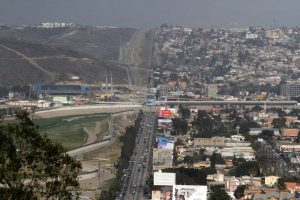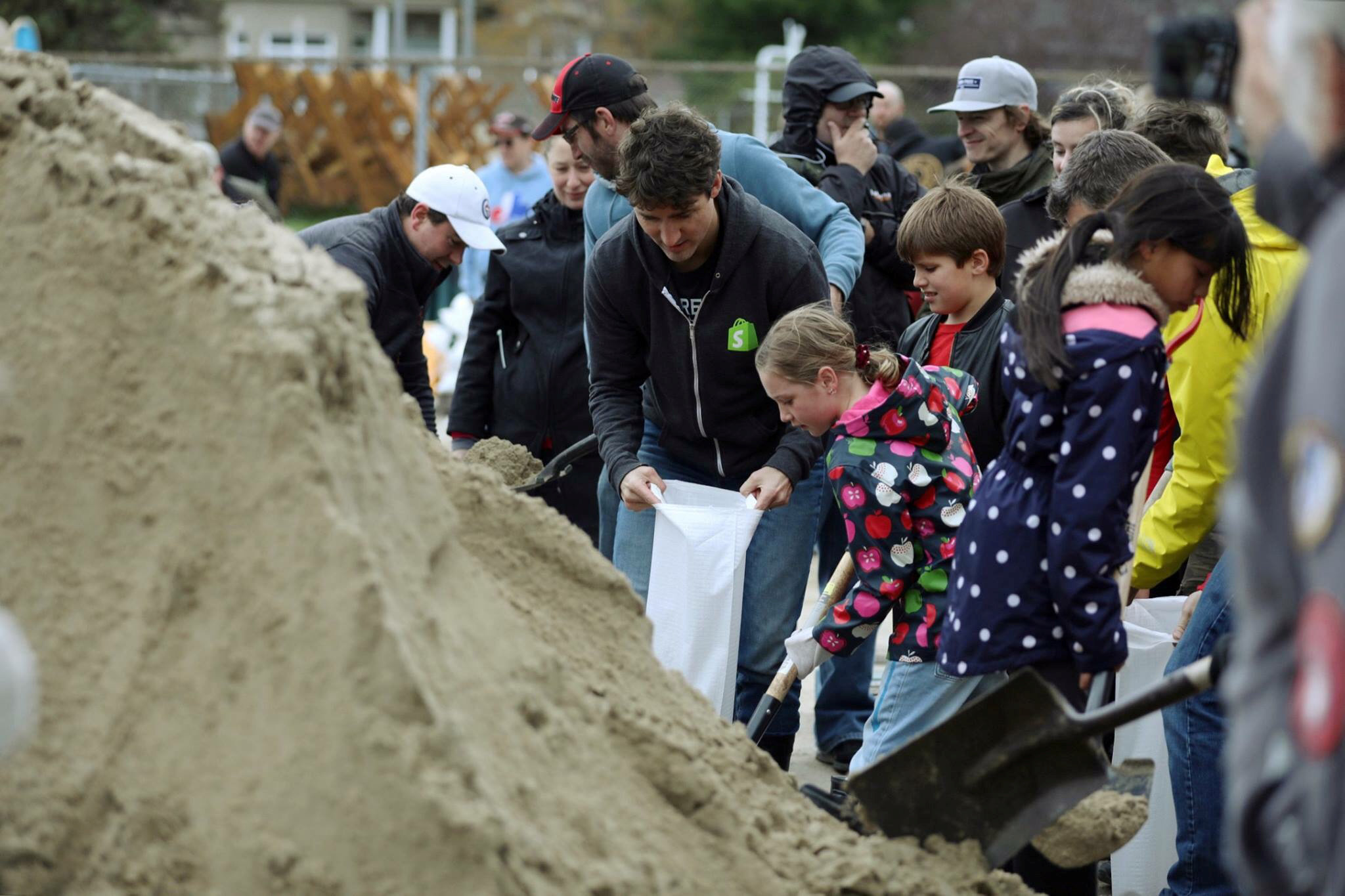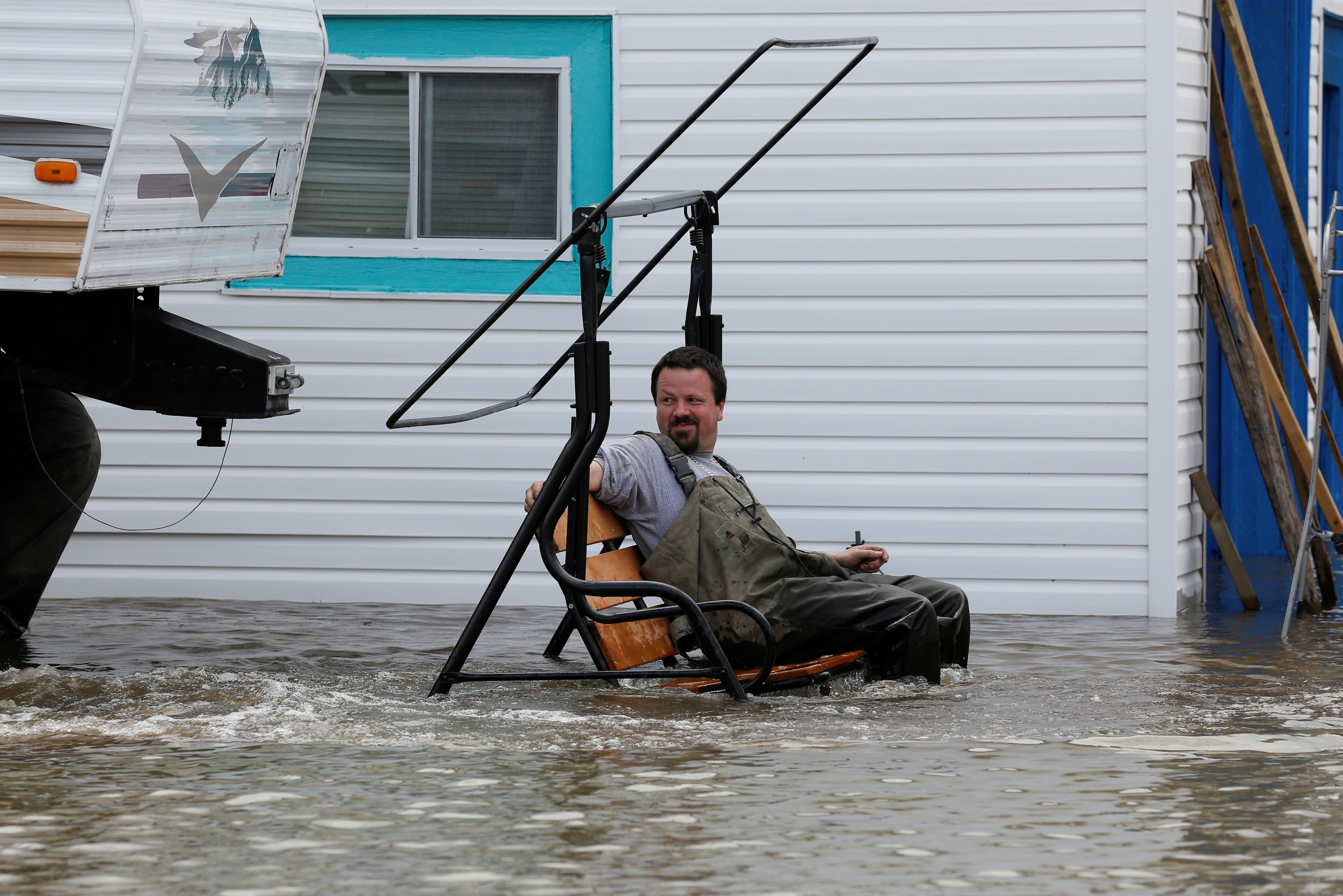
WASHINGTON (Reuters) – President Donald Trump, unable to get the U.S. Congress or Mexico to fully fund his border wall, will post National Guard troops along the Mexican frontier, officials said on Wednesday, in a move that was likely to escalate tensions with a key U.S. ally.
The Trump administration was working with the governors of the four southwestern U.S. states along the border to deploy the Guard, said Homeland Security Secretary Kirstjen Nielsen, adding that the troops would not be involved in law enforcement.
In a supporting role, possibly for aerial reconnaissance, the Guard will help U.S. Customs and Border Protection personnel with stopping illegal immigrants from entering the country, Nielsen said at a White House briefing with reporters.
In a memorandum laying out the new initiative, Trump directed Defense Secretary James Mattis to request the use of National Guard personnel to help the Department of Homeland Security in securing the southern border.
He ordered Mattis, Nielsen and Attorney General Jeff Sessions to submit a report within 30 days detailing an action plan and recommendations for any other executive authorities to be invoked to protect the border.
The administration’s move drew criticism from Democrats. Senator Michael Bennet of Colorado said Trump has failed to engage with lawmakers on bipartisan immigration reform that would satisfy both parties’ agendas on the volatile issue.
“Unfortunately, the president failed to lead, and rather than find real solutions on immigration, he continues to stoke fear,” Bennet said in a statement.
The Mexican government has told the United States that “if the announced deployment of the National Guard turned into a militarization of the border, that would gravely damage the bilateral relationship,” Mexico’s Foreign Ministry said.
It said Nielsen discussed the planned National Guard deployment with Mexican Foreign Minister Luis Videgaray on Wednesday and told him the troops will not carry arms.
In keeping with a theme he often invoked as a candidate in 2016 and has continually returned to since taking office, Republican Trump has sharpened his anti-immigrant rhetoric, warning that illegal immigrants threaten U.S. safety and jobs.
His plan to deploy troops comes after his failure so far to persuade either the Mexican government or the U.S. Congress to fully fund a wall he wants to build along the border.
At the same time, the Republican-controlled Congress has failed to meaningfully overhaul U.S. immigration law, despite demands from Trump for a deal. With campaigning by lawmakers for November’s midterm congressional elections getting under way, little legislative action was expected in months ahead.
The National Guard is a reserve wing of the U.S. armed forces that is partially under the authority of governors.
Trump’s plans were hailed as welcome and needed by the Republican governors of Arizona and Texas.
The California National Guard will promptly review Trump’s request “to determine how best we can assist our federal partners,” said a spokesman for the state’s unit in a statement. He added he was speaking for Governor Jerry Brown, a Democrat.

A general view shows San Diego, U.S. and Tijuana, Mexico (R) in this picture taken from the Mexican side of the border in Tijuana, Mexico 4, 2018. REUTERS/Jorge Duenes
WALL ON BASES?
Trump last month signed a federal spending bill that contained $1.6 billion to pay for six months of work on his wall. He had asked for $25 billion for it.
Nielsen told reporters the administration was looking into possibly constructing some wall on border land owned by the U.S. military.
After Nielsen spoke, a senior administration official said, “We expect personnel to be on the border quickly but at this time we don’t have a date, but that will be coming soon.”
Many National Guard personnel are federally funded and can be put under the direction of Washington when they are carrying out federal missions. There are thousands of U.S. National Guard now serving on federal missions, including in Afghanistan.
Nielsen did not give details on the number of the troops to be deployed to the border or the cost of the operation.
She said the administration had drafted legislation and would be asking Congress to provide the legal authority and resources to address “this crisis at our borders.” She said the Guard could conduct aerial surveillance along the border.
Nielsen said that despite steps taken by the administration, drug smuggling, illegal immigration and dangerous gang activity across the border were at unacceptable levels.
“Until we can have a wall and proper security we’re going to be guarding our border with the military,” Trump told reporters at the White House on Tuesday, lamenting what he called “horrible” U.S. laws that left the border poorly protected.
On Wednesday, he said in a tweet: “Our Border Laws are very weak while those of Mexico and Canada are very strong. Congress must change these Obama era, and other, laws NOW!”
While the Trump administration speaks of an immigration “crisis” on the border, U.S. Border Patrol statistics show the fewest apprehensions of illegal immigrants on the border in 46 years. In the fiscal year that ended Sept. 30, 2017, there were 303,916 such arrests, the lowest level since fiscal 1971.
Under Republican President George W. Bush, the National Guard between 2006 and 2008 provided border-related intelligence analysis, but had no direct law enforcement role.
In 2010, President Barack Obama sent National Guard troops to the U.S.-Mexican border to provide intelligence, surveillance and reconnaissance support to U.S. Border Patrol agents.
(Reporting by Jeff Mason, Richard Cowan and Phil Stewart in Washington, Ben Klayman in Chicago and Julia Love in Mexico City; Writing by Mohammad Zargham; Editing by Kevin Drawbaugh and Sandra Maler)














